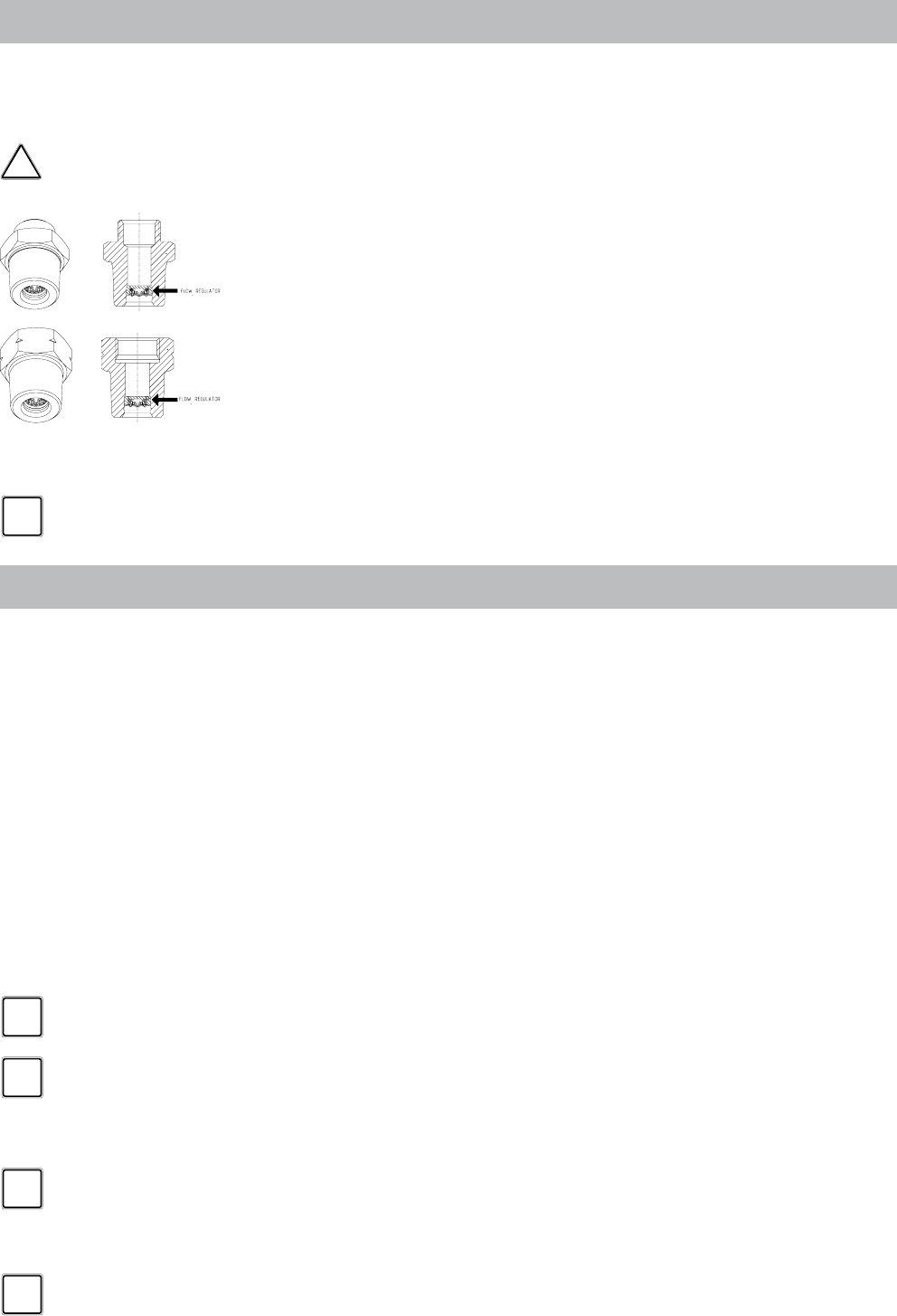
Installation & Servicing Instructions Rinnai E-Series
24
6.5 Hot water supply
Connection of the drinking water installation should be performed according to the
national secondary drinking water regulations.
Do NOT use toxic chemicals, such as are used for boiler treatment in potable
water heating systems used for space heating.
The sanitary water pipes can be connected to the installation by use of adapter
ttings. The cold water inlet on the Combi boilers must be equiped with the following
components (counted in the water ow direction):
Flow regulator valve (supplied), Safety group, Expansion vessel 87 PSI / 6bar (potable
water, blue).
The 3/4" NPT adapter tting with ow reducing valve must be tted in the cold water
connection.
A ow regulator valve is supplied with the boiler in a 3/4"NPT adapter tting. The
ow regulator valve ensures that a quantity of water is supplied which has a outlet
temperature of 120°F (assuming a cold water temperature of 45°F). The quantity of
water is virtually unaffected by the water pressure.
When there is a water pressure lower than 22PSI / 1.5 bar it is advisable to
remove the inside mechanism of the ow reducing valve.
6.6 Condensate drain pipe
This boiler produces condensate. Condensate must be drained otherwise the boiler
will not function and can cause property damage.
The condensation drain pipe should be connected to a drain in the building by means
of an open connection. By this means the possibility of drain gases effecting the boiler
is prevented. The drain connection should have a minimum diameter of 1.3" / 32mm.
Install the condensation drain pipe according to the applicable rules and
regulations.
If the condensate outlet of the boiler is lower than the public sewage system a
condensate pump must be used.
The condensate produced by the boiler has a pH value between 3 and 4.
Install a neutralization unit if required by the local code. It is recommended, but not
required to install a condensate neutralizer.
Do not drain the condensation water to the external rain gutter because of
the danger of freezing and blockage of the drain.
Before putting the boiler into operation ll the condensate trap with 1.27
cups / 300 ml of water. If the boiler will be installed in a high temperature
installation such as baseboard, then ll the condensate trap with mineral oil
instead of water.
Use materials approved by the authority having jurisdiction. In absence of such
authority, PVC and CPVC pipe must comply with ASTM D1785, F441 or D2665.
Cement and primer must comply with ASTM D2564 or F493.
For Canada, use CSA or ULC certied PVC or CPVC pipe, ttings and cement.
Periodic cleaning of the condensate disposal system must be carried out. See
the Rinnai Boiler Application Manual for further information and for a piping
diagram for the condensate.
NOTICE
i
NOTICE
i
NOTICE
i
NOTICE
i
!
DANGER
NOTICE
i


















